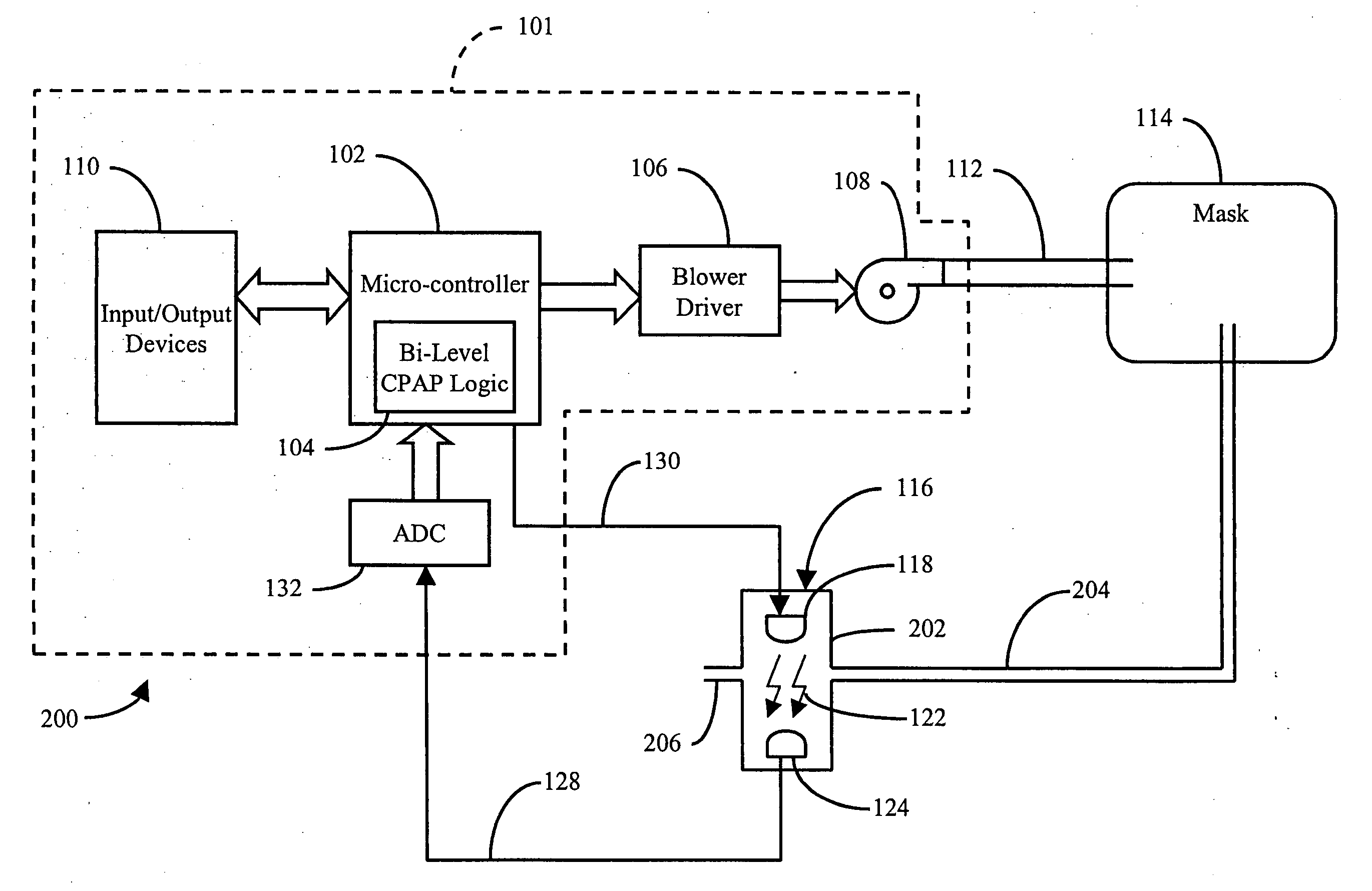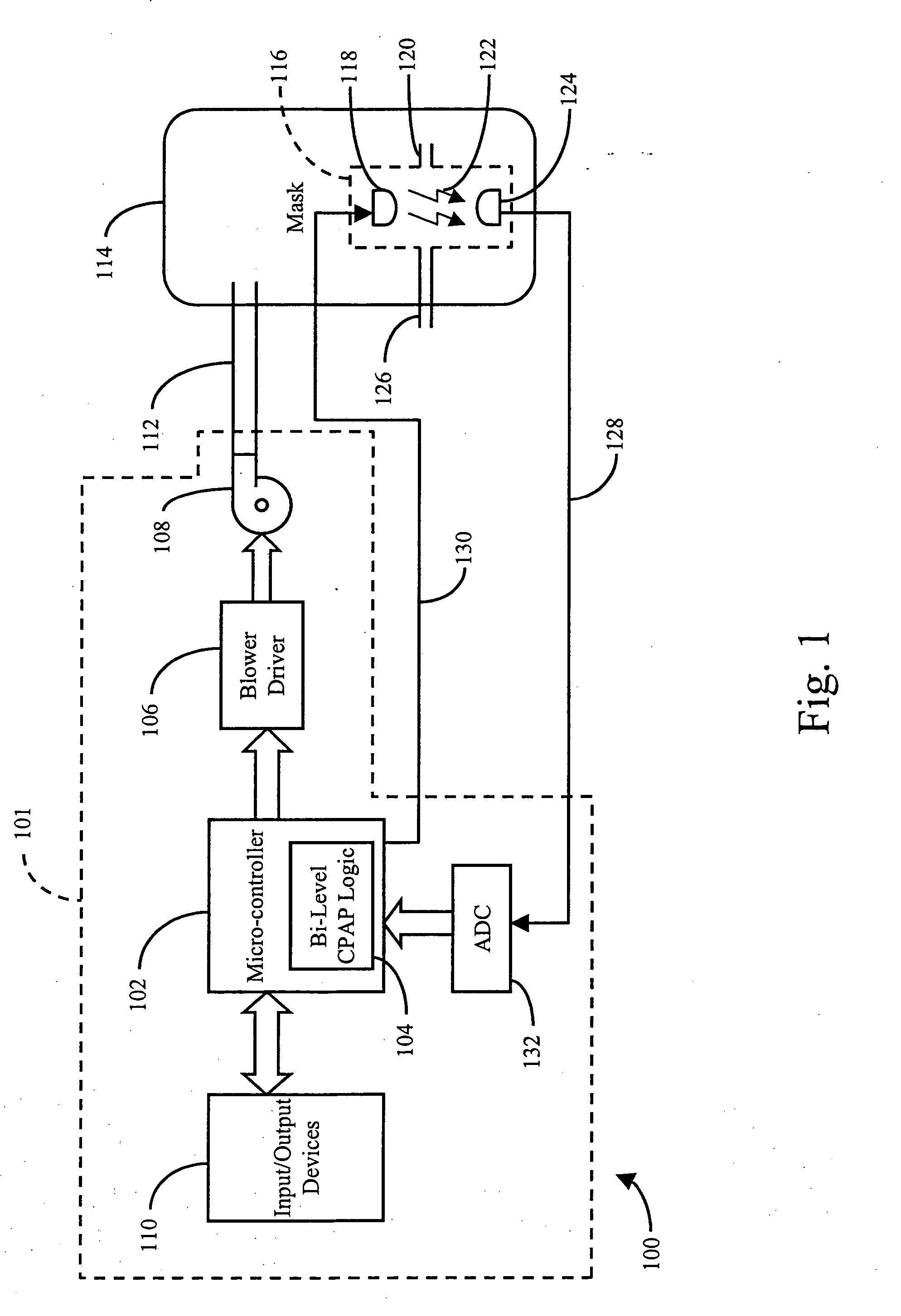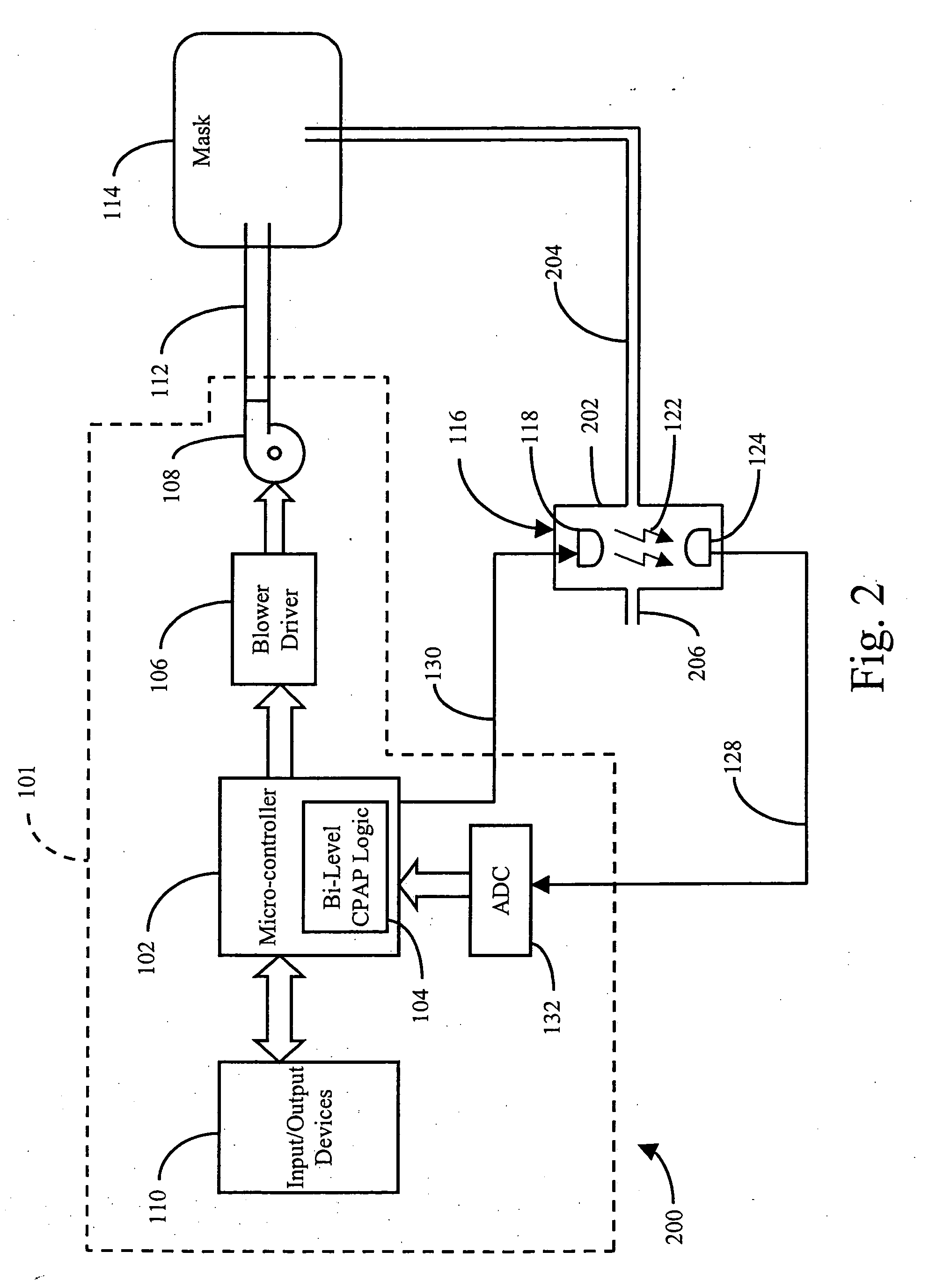Carbon dioxide-based bi-level CPAP control
a carbon dioxide and control technology, applied in mechanical equipment, valves, respirators, etc., can solve the problems of difficult measurement accuracy, response time, and discomfort of patients exhaling
- Summary
- Abstract
- Description
- Claims
- Application Information
AI Technical Summary
Benefits of technology
Problems solved by technology
Method used
Image
Examples
Embodiment Construction
[0021] Illustrated in FIG. 1 is a first bi-level CPAP system 100 of the present invention. The system has a bi-level CPAP apparatus 101 and a patient breathing interface 114. The bi-level CPAP apparatus 101 has a micro-controller 102 with associated bi-level CPAP logic 104. The micro-controller 102 interfaces with a plurality of components including input / output devices 110, analog-to-digital converter (ADC) 132, and blower driver 106. Input / Output devices 110 include, for example, controls that allow a clinician or doctor to set the IPAP and EPAP levels in micro-controller 102 and in bi-level CPAP logic 104. Blower driver 106 interfaces with and drives blower 108 through a range of variable speeds that result in a range of variable air pressures that define the IPAP and EPAP levels. The blower 108 preferably has a motor and a fan and is driven by a pulse-width modulated (PWM) signal wherein the pulse width or duty cycle defines the variable speed and pressure of the blower. Alterna...
PUM
 Login to View More
Login to View More Abstract
Description
Claims
Application Information
 Login to View More
Login to View More - R&D
- Intellectual Property
- Life Sciences
- Materials
- Tech Scout
- Unparalleled Data Quality
- Higher Quality Content
- 60% Fewer Hallucinations
Browse by: Latest US Patents, China's latest patents, Technical Efficacy Thesaurus, Application Domain, Technology Topic, Popular Technical Reports.
© 2025 PatSnap. All rights reserved.Legal|Privacy policy|Modern Slavery Act Transparency Statement|Sitemap|About US| Contact US: help@patsnap.com



